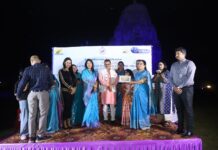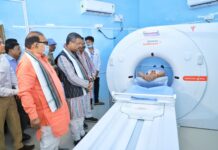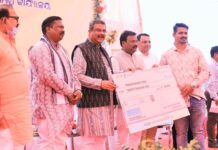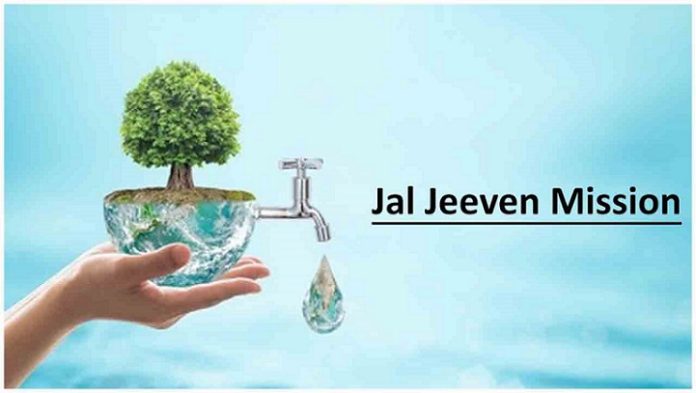By Our Correspondent
BHUBANESWAR/NEW DELHI: Haryana and Odisha presented their Jal Jeevan Mission Annual Action Plan today via video conferencing charting their plan of action for the financial year 2021-22 as well as the saturation plan for the States, thereby ensuring every rural household in these States will get household tap water connection. During the presentation, the State of Haryana reiterated their commitment to achieve the JJM target by 1st November 2022 i.e. Haryana Day, much ahead of the national deadline. Odisha plans for 100% saturation by 2024.
This month-long exercise of taking up the Annual Action Plan of States/ UTs under Jal Jeevan Mission, is done by a committee chaired by Secretary, DDWS and with members from different Central Ministries/ Departments and NITI Aayog to do a rigorous scrutiny of the proposed Annual Action Plan (AAP) prepared by States/ UTs before finalizing the same. Thereafter, funds are released throughout the year and regular field visits, review meetings are held to ensure implementation of these Annual Action Plans to achieve the goal of Jal Jeevan Mission.
The review committee analysed and advised on the Annual Action Plan of both the States. The committee advised the State to identify sources of convergence & invest in sensor-based IoT technology for real-time monitoring and measurement of water supply. Further, the committee emphasised on well-placed Information, Education & Communication (IEC) strategies to instil behavioural change amongst public.
Haryana State has 31.03 lakh rural households, out of which 26.93 lakh (86.8%) rural households are provided with tap connections as on 31st March, 2021. In 2021-22, the State plans to provide 4.09 lakh tap connections.
For Haryana, the Committee advised the State to work on water sources sustainability as with increasing tap connections at household level the load on water requirement has to be accounted for. There is urgent need for grey water management and behaviour change among people so that water, which is a limited resource, is used judiciously. Needless to say that in peak summer water scarcity is left the most and the increasing cases of Corona pandemic is forcing people to wash hands frequently which has put pressure on water supply at all times to fight the disease which has engulfed the globe.
The mission gives a lot of emphasis on water quality surveillance and monitoring. It mandates that in every village 5 persons especially women to be trained for use of Field Test Kits, so that water can be tested in villages. Public Health Engineering Department/ Rural Water Supply department of States are ensuring supply of safe drinking water to rural homes and monitoring water quality on regular basis by testing in the laboratories.
Now, in the times of Corona pandemic, it has become very important to deal with the issue of water scarcity & contamination. Clean water will promote better hygiene and a functional tap in household premises will ensure social distancing by avoiding crowding at public stand posts; thus, the States/ UTs need to take good view of the importance of tap connections in every household.
In 2021-22, in addition to Rs. 50,011 Crore budgetary allocation for JJM, there is also Rs. 26,940 Crore assured fund available under the 15th Finance Commission tied-grants to RLB/ PRIs for water & sanitation, matching State share and externally aided as well as State funded projects. Thus, in 2021-22, more than Rs. 1 lakh Crore is planned to be invested in the country on ensuring tap water supply to rural homes. This kind of investment in rural areas will boost the rural economy.
The State of Odisha has 85.66 lakh rural households, out of which tap connections are provided to 23.25 lakh households i.e. 27.15% of rural population in Odisha receives water through taps. When Jal Jeevan Mission started on 15th August 2019, only 3.63% of the people in Odisha had access to tap water. In the past one-and-a-half year, Jal Jeevan Mission has ensured 20.15 lakh rural homes get safe drinking water through tap connections. Every household in 2,996 villages in Odisha are getting safe water for drinking water. Odisha has declared its 57 Panchayats as Har Ghar Jal ones; which means that all the households in these Panchayats have been provided with piped water connection.
In 2021-22, Odisha plans to provide piped water supply in 29,749 schools and 43,727 Anganwadi Centre thereby ensuring that 100% tap water connection is provided in all the schools, ahsramshalas and anganwadi centre for drinking, cooking mid-day meal, handwashing and use in toilets.
Odisha has set 2023-24 as the target year for providing 100% Functional Household Tap Water Connection in every rural household. So far, the State has heavily invested in training. Self Help Group members were trained to conduct water quality surveillance- sanitary inspections of 4.64 lakh drinking water sources across the State. It is an important surveillance mechanism to test the water source and end point. Field Testing Kits are being provided at Panchayat level and handed over to the sub-committee constituted for carrying out frequent tests especially during pre and post monsoon for testing water quality for taking corrective measures.
In summers, issue pertaining to water quality & scarcity comes to forefront in Odisha State. The national committee suggested to focus on testing & treating contaminated water. Odisha plans NABL accreditation of 19 laboratories during the current year. During the CoVid-19 pandemic situation, efforts to provide household tap connections in rural areas will definitely improve the ease of living especially of women and girls by reducing their drudgery and making them safe and leading a dignified life.



























